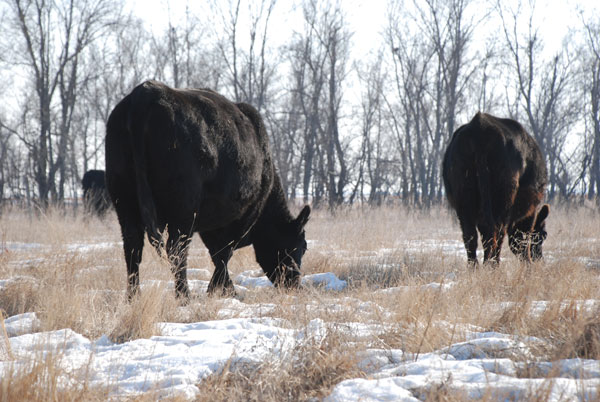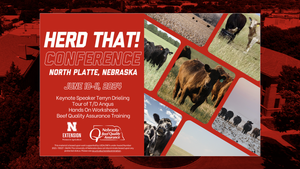Don’t let up yet: Keep fighting off cattle lice until spring
Lice infestations can run through March, so continue to be on the lookout for signs of a lice problem in your herd.
January 18, 2018

By A.J. Tarpoff
It’s January and in some parts of cattle country, it hardly seems as if it has been wintertime at all. Other regions? Well, they’ve had a their fair share of cold weather. Either way, whether or not it’s been a warm winter in your area or bitterly cold, winter lice infestations can still be a problem.
Cattle lice infections can affect the health and performance of our cows and stocker cattle during the winter months. This lice season generally ranges from December through March. The USDA has estimated that livestock producers lose up to $125 million per year due to effects of lice infestations.
Not only can they be the cause of direct animal performance losses, but they also increase wear and tear on our facilities and fences. The direct losses to cattle come in forms of decreased average daily gains (documented 0.25 pounds per day reduction in growing calves), skin infections and potentially blood loss and anemia.
Types of lice
There are two different types of lice that infect cattle. First, there are biting lice that feed on the skin and secretions on the outside of the animal. The other type is known as sucking lice. These species are blood feeders and pierce the skin.
Both types of lice spend their entire lifecycle on the cattle hosts. Off of cattle they survive very poorly and generally only last a few days. Lice are very species specific, so cattle lice cannot affect people, horses, or any other species.
In general, every herd has some level of lice infestation. Lice are carried from season to season by a small percentage of the herd that act as reservoir hosts. Adults lay eggs on the hair of infected animals. The overall lifecycle for an egg to mature into an adult and lay eggs is roughly 28 days. Most females lay one egg per day.
Clinical signs of lice-infected cattle generally begin with constant rubbing and scratching within the herd. Fences, posts, water troughs, trees and any other stationary object could be subject to damage from this rubbing. As the infection and irritation continues, large hairless patches will become evident on animals.
Further diagnosing the issue beyond the clinical signs requires seeing the adult lice on the skin. Parting the hair will reveal the lice. They are very small but can still be seen. They are roughly the size of a grain of sand. The economic threshold for treatment is roughly 10 lice per square inch.
Treatment options
There are several options when it comes to treatment of lice in our cowherds. One option is the avermectin endectocides. These products come in pour-on formulations and injectable formulations. Avermectins treat internal intestinal nematodes, but also treat external parasites such as lice. It is important to note that the injectable formulations do not work on biting lice since they do not blood feed.
The other options are topical treatments that are non-systemic. These products are typically pyrethroid products similar to what is commonly used to control horn flies during the summer months. These products are very effective against the adult lice, but do not affect the larvae or eggs. Retreatment is often indicated 14 days after initial treatment. There is a product available that is a pyrethroid in combination with an IGR (insect growth regulator) that not only works very well against the adults, but also works against the eggs and larvae. Use of this particular product eliminates the need to retreat in 14 days.
When treating cattle, it is important to treat the entire group. Missing one animal could allow it to serve as the reservoir for reinfesting the entire herd. The same thought should be given to new additions to the herd from an outside source. Basic biosecurity such as treating and segregating new additions for 30 days is not only good to reduce risk of lice, it is also a great tool in decreasing introduction of other diseases.
Tarpoff is beef Extension veterinarian with Kansas State University
You May Also Like


.png?width=300&auto=webp&quality=80&disable=upscale)
